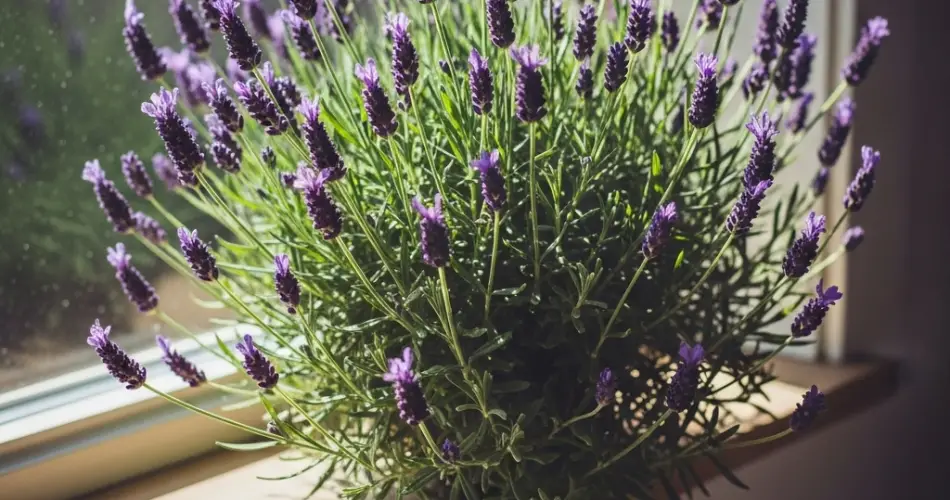Lavender is beloved for its calming fragrance, delicate purple flowers, and versatility in culinary, cosmetic, and medicinal uses. Growing lavender in containers on a sunny windowsill is not only possible, but also incredibly rewarding—especially when you know how to care for it to maximize growth and yield. Whether you’re aiming to harvest fragrant blooms or enjoy lush greenery, this guide will help you get the most out of your potted lavender plant.
Choosing the Right Lavender Variety
Not all lavender varieties are equally suited to indoor container growing. For windowsill cultivation, look for compact or dwarf varieties that thrive in smaller pots:
-
Lavandula angustifolia (‘Munstead’ or ‘Hidcote’): English lavender with a compact form and rich fragrance.
-
Lavandula dentata: Also known as French lavender, great for decorative and fragrant indoor displays.
-
Lavandula stoechas: Spanish lavender with striking flower heads and a tolerance for container life.
These varieties stay manageable in size and are more adaptable to indoor conditions.
Best Container and Soil Conditions
Lavender prefers dry, well-drained soil and plenty of root space. The right container and soil setup is key to maximizing both plant health and flower production.
Container Tips:
-
Use a terracotta or ceramic pot that allows air and moisture to escape.
-
Ensure there are adequate drainage holes at the bottom.
-
Choose a pot that’s at least 10–12 inches wide to support root growth.
Soil Mix:
-
Lavender doesn’t tolerate soggy conditions, so use a mix of:
-
2 parts potting soil
-
1 part coarse sand or perlite
-
Optional: a bit of crushed limestone to raise soil pH, mimicking its natural Mediterranean habitat.
-
Avoid heavy or moisture-retentive soils, which can lead to root rot.
Light and Location
To thrive and bloom, lavender needs at least 6 to 8 hours of direct sunlight per day. Choose the sunniest window in your home, ideally south- or west-facing. If natural light is insufficient, supplement with a full-spectrum grow light placed about 6–12 inches above the plant.
Rotate the pot every few days to ensure even exposure and prevent leaning toward the light source.
Watering with Care
Lavender is a drought-tolerant herb that prefers to dry out between waterings. Overwatering is one of the most common mistakes and can lead to fungal problems.
-
Water only when the top inch of soil is dry.
-
Use a watering can with a narrow spout to direct water at the base.
-
Avoid getting the foliage wet to prevent mold and mildew.
During winter, reduce watering frequency as growth naturally slows.
Feeding for Maximum Bloom
While lavender doesn’t need heavy feeding, a little boost can help improve yield, especially when grown in containers with limited nutrients.
-
Use a low-nitrogen, high-potassium fertilizer every 4–6 weeks during the growing season (spring to early fall).
-
Avoid nitrogen-heavy fertilizers—they encourage leafy growth at the expense of flowers.
An organic liquid fertilizer or a slow-release granular formula made for herbs or flowers works well.
Pruning and Harvesting Techniques
Regular pruning encourages bushier growth and more blooms. Here’s how to do it:
Light Pruning:
-
In early spring, trim the tips of stems to shape the plant and stimulate fresh growth.
Main Pruning:
-
After the first bloom (usually mid to late summer), cut back about one-third of the plant, just above a set of healthy leaves.
-
Never cut into the woody part of the plant—lavender doesn’t regenerate well from old wood.
Harvesting:
-
Pick flowers when about half the buds on a stem are open for the best scent and oil content.
-
Use sharp scissors or garden snips and cut in the morning when oils are most concentrated.
-
Hang bunches upside down in a dry, dark place to preserve fragrance.
Managing Indoor Conditions
Even indoors, lavender can attract pests like spider mites or fungus gnats. Keep the area around your plant tidy and ensure good air circulation by not overcrowding the windowsill.
-
Avoid excess humidity—lavender prefers dry air.
-
If the air is too moist, consider running a dehumidifier or placing the pot in a slightly drier room.
-
Remove any yellowing leaves promptly to prevent mold buildup.
Winter Dormancy
Lavender goes semi-dormant in winter, especially indoors. Growth slows, and it may not bloom, but the plant is still alive.
-
Place it in a bright, cool spot (around 50–60°F / 10–15°C).
-
Reduce watering and do not fertilize during this period.
-
Resume normal care as daylight increases in spring.
Final Thoughts
Growing lavender in containers on a sunny windowsill is a practical and fragrant way to enjoy this Mediterranean herb year-round. By choosing the right variety, providing proper soil and light, and practicing mindful watering and pruning, you can enjoy abundant blooms and healthy growth with minimal effort. With consistent care, your indoor lavender plant can thrive and reward you with beautiful, aromatic harvests for years to come.



